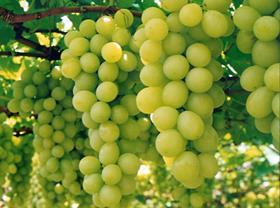
With the Indian table grape season well under way, export volumes to the EU are trailing far behind the levels at this stage last year, and many exporters predict they will struggle to reach 50 per cent of the total sent there in 2010.
“It is very clear that overall volumes of Indian grapes to the EU will be down by about 50 per cent as compared to 2010,” said Nitin Agrawal of major exporter Euro Fruits. “As of 14 March, our figures show that 565 containers have been shipped to the EU, compared with 1,300 containers at the same point last year. Day temperatures are also rising very quickly now and this only means the season might end a week or two earlier than normal.”
Chaitanya Rajwade of Mahindra ShubhLabh Services, another leading exporter, expects a similar shortfall in total shipments.
“Previously the industry has shipped a total of 3,750 containers to the EU. This year, we expect the volume to be around 2,000 containers, and it could drop as low as 1,500 containers,” Mr Rajwade told Fruitnet.com, adding that Mahindra expects to ship around 170 containers to Europe.
Exporters attribute the dramatic drop to a range of factors, including supply shortages caused by adverse weather and a hungry domestic market, higher compliance costs for the EU market and caution among EU buyers in the wake of last year’s Chlormequat Chloride residue issue.
Availability of EU export-grade Indian grapes was limited to begin with this year, partly because of rains in October/November and severe winter weather, which have affected overall quality and volumes.
But exporters say that securing suitable fruit for the EU has been rendered more of a challenge by new residue-testing requirements and by extraordinarily strong domestic demand for high-quality grapes.
Following last year’s residue issue with Chlormequat Chloride Component (CCC), Indian export development agency APEDA has expanded its residue monitoring programme to test for 171 chemicals, including plant growth regulators. And the more rigorous testing procedures have filtered out a significant percentage of production as well as ramping up laboratory testing costs for suppliers.
“I’d estimate that 20 per cent of the available fruit is failing residue tests, and this rejected fruit is then taken out of the system,” said Mr Rajwade. “The cost of testing for residues has also gone up three-fold and basically if a sample gets rejected the product doesn’t get exported, so there is a lot more risk entailed.”
Faced with these added costs and complications, a number of growers and exporters are turning their attentions to other markets, not least the burgeoning demand on their doorstep.
“Domestic prices are very strong,” said Mr Rajwade. “For an entire vineyard with export-grade fruit, growers are getting Rs32-35 per kg from domestic buyers.”
In addition to feeding the strong pull from the domestic market, suppliers are exploring emerging markets such as South East Asia, according to Mr Agrawal. “These new emerging market options are relatively hassle-free in their requirements compared with Europe,” he pointed out.
EU buyers have also been in a cautious mindset when it comes to ordering Indian grapes this year following the CCC issue in 2010. “Very few suppliers have been able to get a programme into Europe because the buyers are very, very cautious,” explained Mr Rajwade. “They’ve held back advances to exporters, which many of the shippers rely on.”
Germany, traditionally the industry’s largest market in the region, has been particularly guarded, according to exporters. “Until this week, Germany had not imported a single container `directly`,” said Mr Agrawal.
Like other exporters, Euro Fruits has shown a deep and lasting commitment to meeting the stringent demands of EU markets, and Mr Agrawal said it is vital that the industry receives support from the trade there this year.
“This is going to be a very high cost season for Indian grapes,” he told Fruitnet.com. “We expect and we hope the EU market will compensate suitably as otherwise the entire Indian grape industry will be in a very difficult position.”
While this year’s exports to the EU look set to plummet, key industry sources remain confident that shipments can rebound in 2012, providing there are no residue incidents this year and that the right systems are put in place. But with the risks-to-rewards ratio shifting unfavourably for Indian suppliers, and demand from domestic and regional markets only set to rise, the paramount importance of the EU market to Indian grapes could be on the wane.



